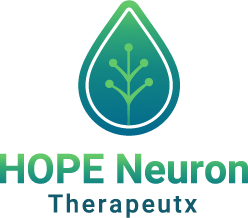Frequently Asked Questions
To date, virtually all approved and studied solutions to treat ALS and other neurodegenerative diseases have been pharmacological in nature. HOPE-Neuron’s SELanetx™ technology is radically different because it is device-based, conditioning a patient’s own blood to promote healing.
SELanetx™ creates an apoptogenic shift using a patient’s own blood to switch cells from killing mode (M1) to healing Mode (M2), thereby rebalancing a person’s body away from damaging inflammation and dysregulated function and into normalized cell health.
The HOPE-Neuron SELanetx™ treatment will involve taking a small quantity (a little more than ½ cup) of a patient’s own blood, conditioning this blood through the company’s SELanetx™ device, then reinfusing this treated blood back into the patient. Because there is no off-site processing, the therapy is expected to take about 30 minutes and can be administered on an out-patient basis. Currently, the company’s initial estimate is that this regimen will involve 3 treatments per year for a typical patient.
The process does not use any pharmaceuticals or toxic chemicals, so there are no known side effects.
In 2024, HOPE-Neuron completed an important mouse trial at Indiana University that translated to humans indicated the therapy could prolong the life of ALS patients. Because this is a non-pharma, device-based solution with an excellent safety profile, the pathway to human trials could be very fast -- potentially within a year of the next clinical study.
Although the company’s research dates back more than a decade, in its current form HOPE-Neuron has been largely self-funded (friends and family) and has operated primarily as a stealth operation focused on R&D. The success of the 2024 ALS mouse study has created an urgency to move quickly to human trials. Management believes that further progress may earn the company fast track status.
Our pathway is set, with additional studies already planned and research partners in place. Our limiting factor is simply funding. To expedite this process, we are calling out to the ALS, MS, and Parkinson’s communities to help fund the next phase of our research.
